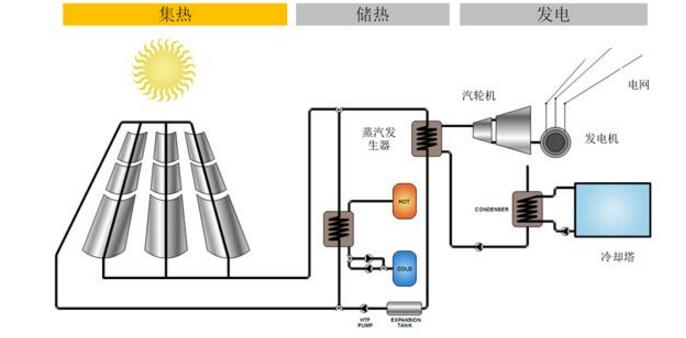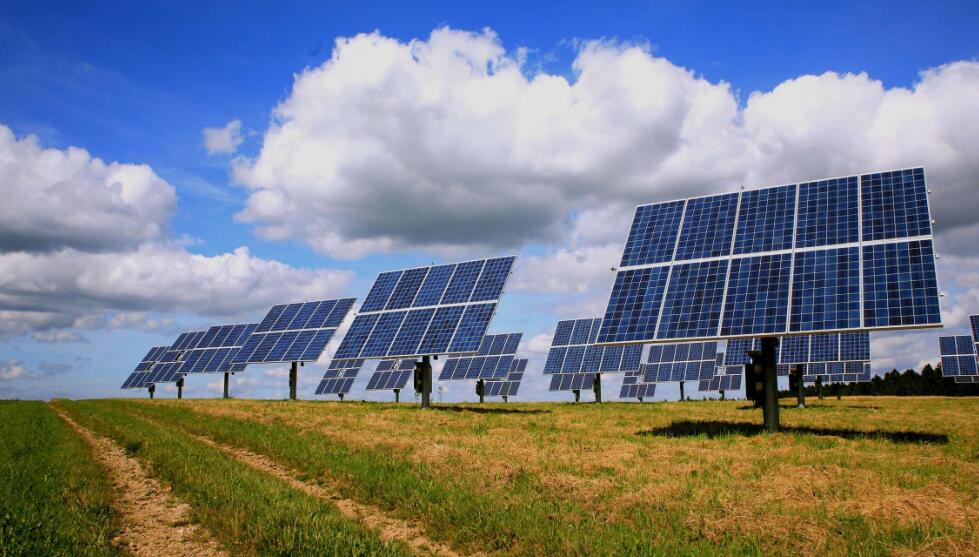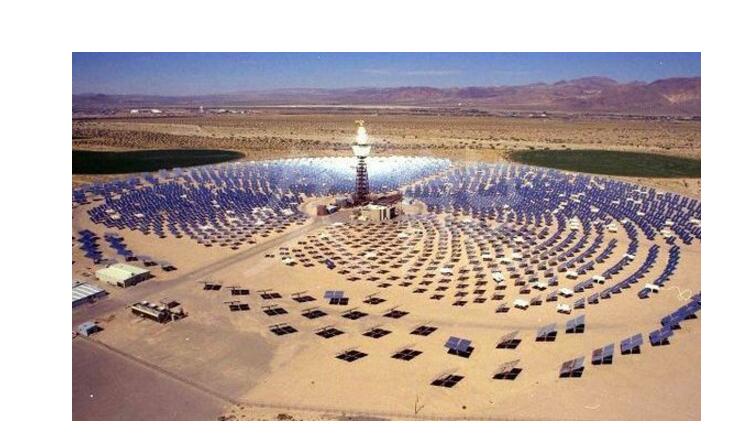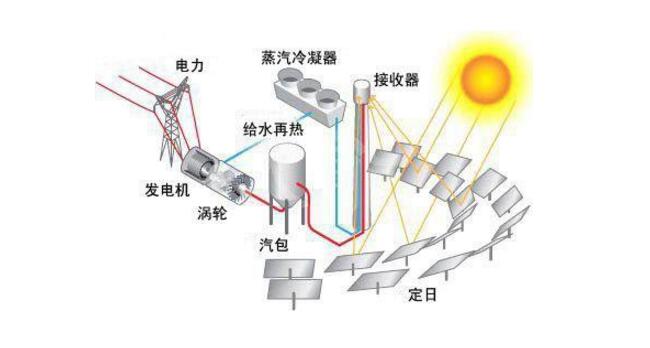Shenzhen Yangon Technology has launched the installation of the world’s first 24-hour non-disruptive energy-storage solar thermal power generator set. With its outstanding technology and cost control, the company has taken a big step forward in the history of human solar thermal power generation. “This photo-thermal power generation unit has completely crossed the threshold of marketization, and now it is waiting for investment to enter. The era of large-scale CSP is coming,†an industry source said excitedly. Subsequent to the investment booms of hydropower, wind power, nuclear power, and photovoltaic power generation, light and heat power generation has gradually warmed up in the past two years, and it has entered the eyes of investors and strategic decision makers. As CSP compensates for the unstable and discontinuous nature of new energy sources such as photovoltaics, wind power, and geothermal energy, many countries will position them as the basic load of electricity in future energy planning. The EU plans to invest 400 billion euros in the next 10 years to establish a series of grid-connected solar thermal power stations in the Middle East and North Africa to meet 15 percent of Europe’s electricity needs and some of the power needs of the power stations.
Domestic light and heat projects are more important. The "Mid-term and long-term development plan for renewable energy" pointed out that during the "11th Five-Year Plan" period, large-scale grid-connected solar photovoltaic power station demonstration projects were established in Dunhuang, Gansu and Lhasa, Tibet, and solar thermal power generation demonstration projects were established in Inner Mongolia, Gansu, and Xinjiang. By 2020, the total capacity of solar photovoltaic power stations nationwide will reach 2,000 megawatts, and the total capacity of solar thermal power generation will also reach 2,000 megawatts. Huang Xiang, vice chairman of the China Electric Association of the 973 (National Key Basic Research Program) estimates that by 2020, China's solar thermal power generation market can reach 22.5 trillion to 30 trillion yuan, and the total amount of thermal power generation can account for the entire year. 30%-40% of power generation.
Compared with photovoltaics, geothermal, etc., light and heat have the advantages of low cost, zero pollution, stability and continuity, and are most suitable for grid-connected power generation. Many years ago, Chinese companies have started to research on the technology of solar thermal power generation. Compared with the position of the photovoltaic world processing factory, CSP technology has taken the lead in domestic breakthroughs. This moment that the industry has been expecting for years has finally arrived, the advantages of CSP will be fully demonstrated, and the entire light and heat industry will enter the outbreak phase. .
This time finally arrived with the formal installation of the solar thermal power generator set of Shenzhen Yangneng Technology. Like the experts' expectation of light and heat, this photo-thermal power generator has a lower composition, stronger stability, and less pollution. Shenzhen Yangon Technology owns all the knowledge and technology property rights, and its actual results even exceed the expectations of experts. According to the assessment of experts, the principle and model of this generator set have already completely established the basis for large-scale grid-connected power generation. Another expert emphasized that “there are few years of domestic research on this major technology, and some breakthroughs have been made so quickly. To my surprise, but the need for society to accelerate the maturity of this technology is inevitable. But in any case, the world will enter the era of light and heat."

Sun Rui, vice president of the Power Planning and Design Institute, said that the “Thirteenth Five-Year Plan†period is the period for China's CSP industry. The 2020-2030 period is the period of great development of CSP. With the industrial chain, large-scale development, and significant cost reduction, in the future, CSP will gradually become the new energy source for basic power load, which will become the “emphasis†for the development of new energy in China.
It is in order to further promote the rapid development of the CSP industry and explore practical ways to lay the foundation for the development of light and heat after 2020. With the strong support of the government of Haixi Prefecture of Qinghai Province and Delingha City Government of Qinghai Province, Focusing on the clean energy highland and creating the world's light and heat capital as the theme, with the aim of “scientific implementation and development planningâ€, the 2nd China Delingha Light and Heat Conference will be held on September 22-23 in Qinghai Province. The Lingha Haixi Conference Center was held.
According to the “13th Five-Year Plan for Solar Energy Developmentâ€, it is clearly stated that by 2020, the installed target of solar thermal power generation will reach 5 million kilowatts. The agency expects to build 5 million kilowatts of solar thermal power projects with a market size of 150 billion yuan.
However, people in the industry stated that the “Thirteenth Five-Year Plan†is a crucial period for the development of light and heat, and the basic task is to upgrade the industry, reduce costs and increase efficiency, and realize a market-based and self-sustaining development that does not rely on state subsidies. However, the industrialization of CSP is still faced with many challenges such as insufficient resources, high initial investment costs, and lack of operating experience. For the CSP industry at the initial stage of development, technological innovation is an important way to promote its development and an important measure to reduce costs.

Combined power generation with thermal power plants, this type of operation will become an important trend in the development of CSP. Photo-thermal power generation and photovoltaic power generation form a complementary effect, and an integrated thermal power + photovoltaic power station is built. Balancing the power production and transmission between photothermal and photovoltaic in the same power generation area can eliminate the intermittent problem of photovoltaic. The combination of these two technologies can effectively reduce the overall system's power generation cost. The New Moon Dune Project in the United States is a fully integrated photothermal and photovoltaic project that supplies power to the mining industry that requires all-weather power supply. The establishment of a distributed power generation system that can help solve power supply problems in remote mountainous regions. The butterfly power generation system is the most suitable, but since its power generation technology is not yet mature, a trough power generation system is often used. High-temperature heat utilization in solar energy. The condenser field of solar thermal power stations can be used to generate steam for industrial applications, such as desalination, textile industry, chemical industry and heavy oil extraction, and some domestic demonstration projects have already been established. Hainan Ledong and Lingao have demonstration projects for solar water desalination. Guangdong Panyu has demonstrations for generating steam at medium temperature for textile mills. Xinjiang Karamay solar preheated natural gas steam boiler is used for heavy oil extraction.
In the next few years, the cost of light and heat is expected to further decline, and the development potential will continue to increase. At the beginning of an industry, the high cost is inevitable. Photovoltaic also started at nearly 40 yuan per watt. Internationally, CSP electricity prices have fallen to 15 cents, and the United States will drop to about 6 cents. The thermal power demonstration project price of 1.09 ~ 1.4 yuan / watt or so, plus the driving force of future investment costs, including the scale of the plant and the localization of the core components, etc., if the follow-up large area spread, the cost is expected to continue to decline. According to the forecast of Greenpeace, the cost of solar thermal power generation will be reduced to 16,000 yuan/kW by 2050, a drop of 40%. In addition, CSP has advantages in energy storage and is an important direction for future development of new energy. According to IEA and ESTELA forecasts, by 2030, light and heat will meet 6% of the world's electricity demand, and by 2050 the proportion will rise to 12%. Photothermal energy will gradually become the main clean energy in the same way as photovoltaics. The next 10 to 15 years will be a period of rapid development of the light and heat market.

The challenges of technological development are mainly in two aspects.
1) The integration and operation and maintenance technology of domestic CSP systems still requires long-term operation verification of large-scale power plants. There are high technical requirements for key equipment, system integration, and power plant operation of CSP. Although in recent years our country has made great strides in the collection of heat, mirrors, condensers, heat storage and other core equipment, Wankwk-class power station There is only one experience with three years of continuous operation. For CSPs with diversified technology types, there are still potential risks in terms of technical feasibility, applicability of integrated technologies and long-term operational reliability.
2) It is inevitable to innovate CSP technology based on actual domestic demand. China's natural and climatic conditions have put forward requirements for CSP technology that are different from the overseas CSP market regions (South America, Spain, South Africa, North Africa, etc.). For example, the “Sanbei†region is characterized by large sand, large temperature difference, and heavy pollution. Concentrator systems and their tracking components need to have strong wind, sand, and dust resistance. The heat collection, heat transfer, and energy storage systems need to accommodate large temperature differences and rapid changes in temperature. Therefore, the application of foreign technologies, the direct use of foreign components and product integration, and the application of the operating mode of the opto-thermal power stations operating abroad can be problematic in China and may lead to the development of China's solar thermal power generation. detour. Collecting heat, heat transfer, heat storage, system integration, and innovation of power station operation technology are necessary.
Demonstration project promotion has provided China's CSP industry with opportunities for independent technological development and technological advancement. The manufacturing industry must focus on the innovation of independent technologies, develop R&D technologies based on the local environment and conditions, and conduct industrial chain construction. On the one hand, it must meet the special conditions of China. More importantly, it is necessary to avoid taking the old roads that some domestic manufacturing industries have experienced, such as a large number of imported technologies and production lines, simple repetition of multiple links, vicious competition, and continuous trade disputes, and establish a truly independent solar thermal power generation industry. Through the demonstration project, it is possible to accumulate experience in project construction and operation, verify the reliability and performance indicators of domestically produced equipment and materials, promote the formation of independent intellectual property rights for core equipment, cultivate system integration capabilities, and truly grasp core and key technologies.
2. Economic levelThe economic and competitive power of CSP is yet to be improved. With the advancement of technology, the cost of CSP has been reduced by a large margin, and the electricity price of newly-launched CSP plants has been reduced from 30 to 35 cents/kWh in 2010 to 15 cents in 2015/ Around kWh, in 2016, the bidding price of CSP was lower to 6.3 US cents/kWh in the Chile bidding project; the cost of CSP in China also decreased significantly, and it decreased by nearly 60% from 2010 to 2016. However, compared with other power sources, the cost of CSP is still high. At present, the price of CSP is approximately 3.3 times that of coal, 2.3 times that of wind power and 1.3 times that of photovoltaic power generation. By nurturing the market to promote the development of domestic industries and promoting technological advancement and scale improvement through industrial development and thus achieving cost reduction, it is an appropriate development path for CSP.
There is great potential for cost reduction of CSP. Many international agencies have good expectations for the cost-competitiveness of CSP, mainly based on the potential of CSP equipment manufacturing, efficiency improvement, system integration technology, and operation technology. IEA expects the levelization cost of CSP to reach 10 cents/kWh before and after 2020; the leveling cost of CSP in 2025, the International Renewable Energy Agency (IRENA) and the US Department of Energy (USDOE) respectively It reaches 9 cents/kWh and 5 to 7 cents/kWh. After 5 years of cultivation, with the mature China's light and heat manufacturing industry, the cost of China's CSP generation is expected to be reduced by about 1/3 on the current basis.
3, policy mechanism levelAfter the introduction of the electricity pricing policy, policies such as grid-connected consumption, finance, land, and taxation are also crucial to the development of CSP, and they should be actively pursued in light of the characteristics of the CSP industry itself. In the above-mentioned electricity price documents, corresponding proposals have also been put forward. “Local relevant departments are encouraged to adopt measures such as tax deductions and exemptions, financial subsidies, green credits, and land concessions, and take various measures to promote the development of the CSP industry.â€
1) In respect of taxation, the country currently implements a VAT preferential policy for most renewable energy sources, such as wind power that enjoys a VAT of 50%, that is, refunds, and VAT of agricultural and forestry waste power generation and waste-to-energy electricity is 100%. Power generation also enjoys 50% VAT rebate on 2013-2018. It is initially estimated that if CPV is to enjoy a 50% VAT reimbursement, it can reduce electricity demand by about 6 points per kWh.
2) In terms of financial policy, for CSP demonstration projects, consideration can be given to securing special loan arrangements. According to preliminary calculations, if the interest rate is reduced by 1%, the electricity price may be reduced by about 6 points/kWh.
3) With respect to land-use policies, the availability of land and appropriate land acquisition fees and user fees are very important for the sustainable development of the CSP market. It is possible to learn from and apply for land policies that are equivalent to photovoltaic power generation, that is, to use desert land and do not involve private use, do not occupy land annual plan targets, and consider adopting land allocation in the form of allocation or lease.

Photothermal power is a strategic renewable energy technology. Although there are currently some technical, industrial, and economic issues that need to be addressed, there is no insurmountable obstacle to the development of CSP. Compared to other power sources, CSP has the following unique advantages.
1) The large-scale development of CSP is conducive to promoting the overall development of renewable energy and transformation of the power supply structure. The Chinese government proposed to promote the revolution in energy production and consumption, and the development of renewable energy is one of the indispensable ways. By the end of 2015, the installed capacity of grid-connected wind power and photovoltaic power generation in China reached 129 million kW and 43.18 million kW, respectively, and more than 80% of capacity was concentrated in the western and northern regions. However, due to the difficulty of storing photovoltaics and wind power, it has shown serious problems in limiting power output. The proportion of power cuts in some regions exceeds 40%. Photothermal power generation can realize power generation based on power dispatch demand through technically feasible and relatively low-cost heat storage devices, which can be used as a foundation to support power supply and also have more flexible peak-shaving capabilities. The large-scale development of CSP power generation can alleviate wind power and photovoltaic power output in the western and northern regions, and together form a clean power generation system, significantly increasing the proportion of renewable energy in the power supply structure.
2) The development of CSP has a significant effect on the economic and related industries. The industrial chain of photovoltaic and solar thermal power generation is very long. However, unlike the photovoltaic industry chain, most of the solar thermal power generation industrial chain is traditional manufacturing, such as the large amount of steel, glass, cement, and solar thermal collectors. Coating, heat storage materials, etc., a 50,000 kW installed with 4 ~ 8h storage of solar thermal power generation system, need steel, glass, concrete are in the 10,000-ton level, the development of solar thermal power generation can moderate relief of China's steel, glass, cement Problems such as overcapacity; In addition, steam turbines and generators are also China's traditional advantageous industries. The integration and operation control of CSP systems have the potential to become emerging industries. Therefore, CSP is not only providing a clean energy supply program, but more importantly, it can stimulate the development of the economy and many traditional and emerging industries.
2. Potential and ProspectsPhotovoltaic power has great potential for development. China is rich in solar energy resources. From the perspective of resource support, the construction of large-scale CSP projects needs to take into account natural resource conditions and conditions for the construction of local infrastructure, mainly including solar direct radiation, terrain and land, water resources, and construction of regional power grid infrastructure. Wait. According to the assessment of the development potential of domestic concentrated CSP power generation by the Institute of Electrical Engineering of the Chinese Academy of Sciences, China's solar direct radiation resources have a potential of not less than 5kWh/(m2·d) of light and heat development of 16 billion kW, of which not less than 7 kWh/(m2·d) The potential for development of light and heat is 1.4 billion kW. In addition, there is also a vast area of ​​light and heat resources in the eastern and central regions that is suitable for the construction of distributed heat and power cogeneration.
The market for solar thermal power generation is wide. Future developments can focus on two major categories of markets: on the one hand, the construction of large-scale solar-thermal power stations equipped with energy storage devices, and the construction of solar-thermal natural gas combined power stations, solar-thermal coal-fired combined power stations, and 200,000 kW And the following coal-fired power stations to transform solar thermal power stations; on the other hand, distributed applications of solar thermal power generation, including the use of solar thermal power generation in islands and remote areas for power supply, heating, and seawater desalination in areas with industrial heat demand Promote the construction of solar thermal and cogeneration, light and heat industrial steam, etc.
The “13th Five-Year Plan†CSP planning target has not yet been formally announced. The current target for the discussion is to achieve 5 million kW of installed capacity by 2020. This goal is a guiding goal and represents the country’s determination and direction for the development of CSP. From the perspective of medium and long-term development, the Chinese government has proposed that non-fossil energy accounts for 20% of primary energy in 2030. According to preliminary estimates, to achieve this goal, wind power and solar power generation will all need to reach the installed capacity of 400-500 megawatts. The contribution of solar thermal power generation will depend on the technology maturity, industrial scale, and economic competitiveness in the next five years.
L01-N Series Push Wire Connectors
Reflow Soldering Wire Connectors,Copper Clamping Wire Connectors,Pcb Wire Connectors,Smd Wire Connectors
Jiangmen Krealux Electrical Appliances Co.,Ltd. , https://www.krealux-online.com
